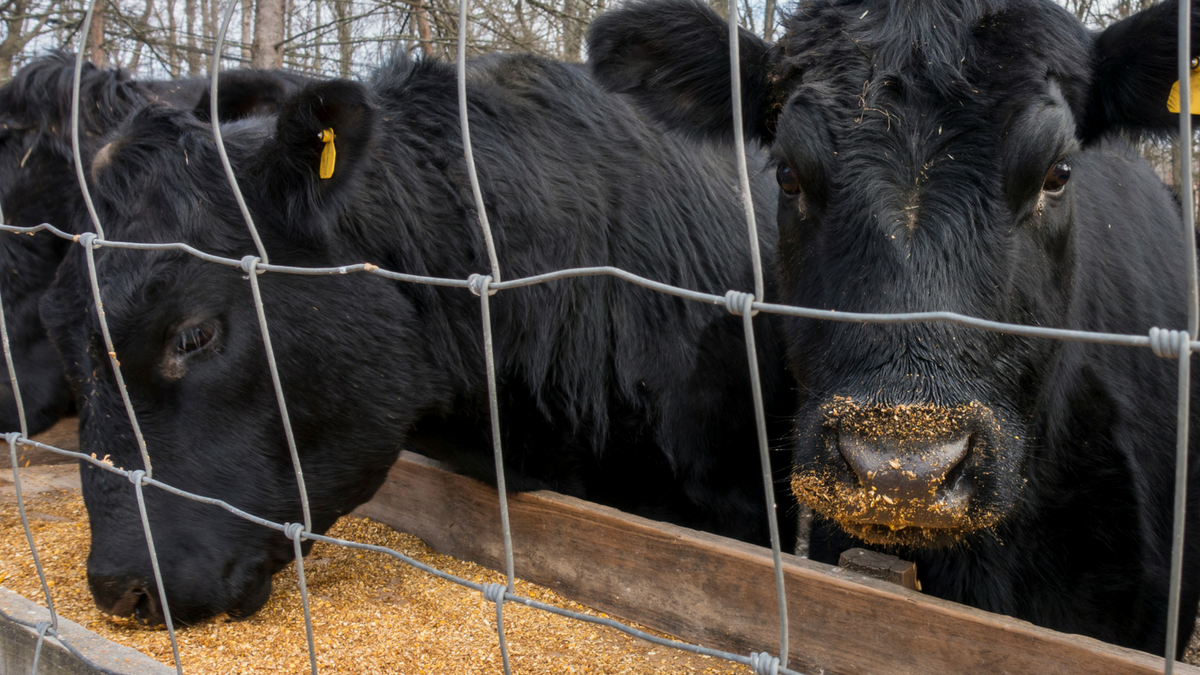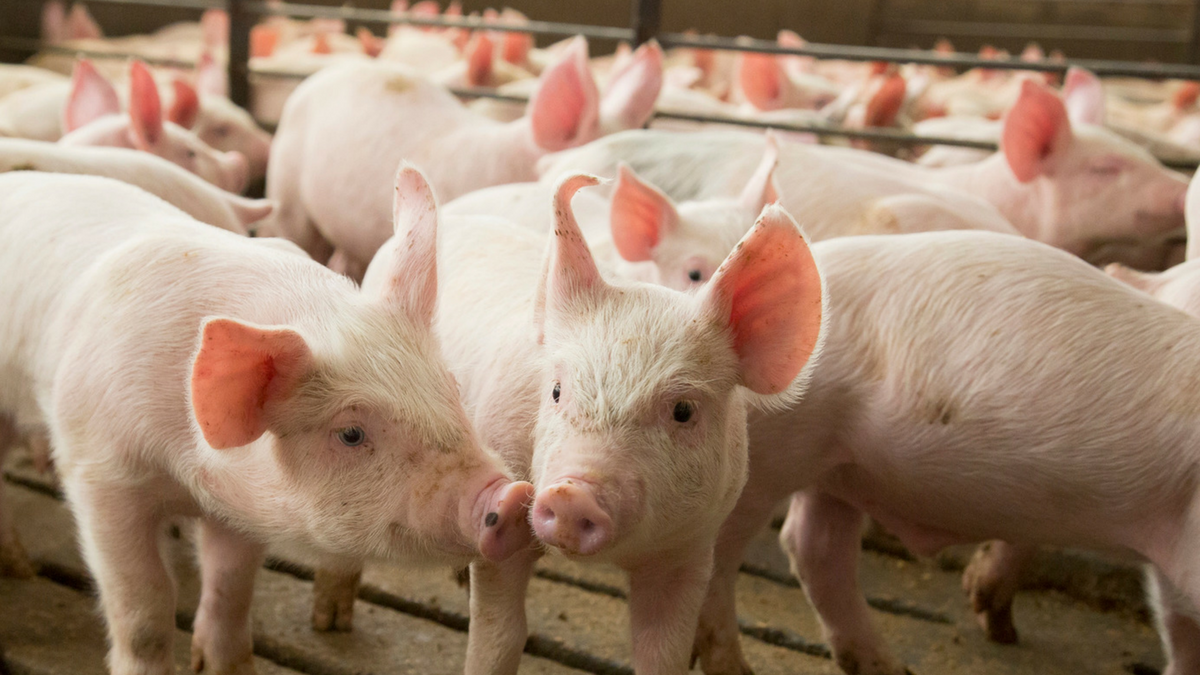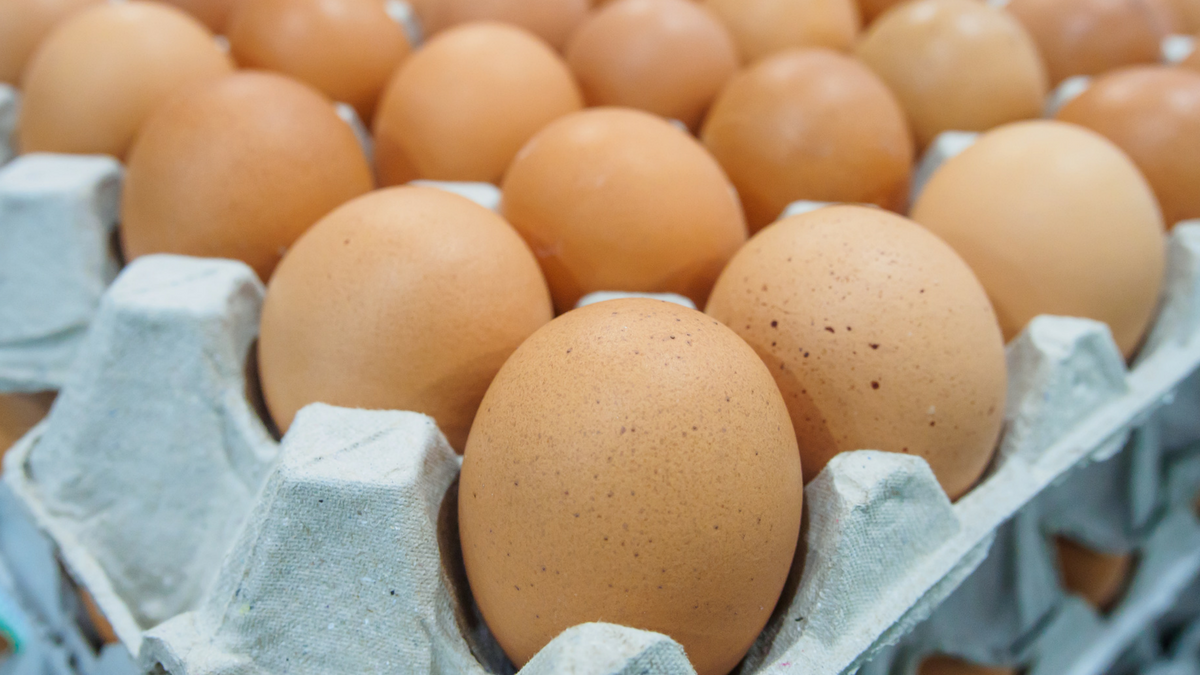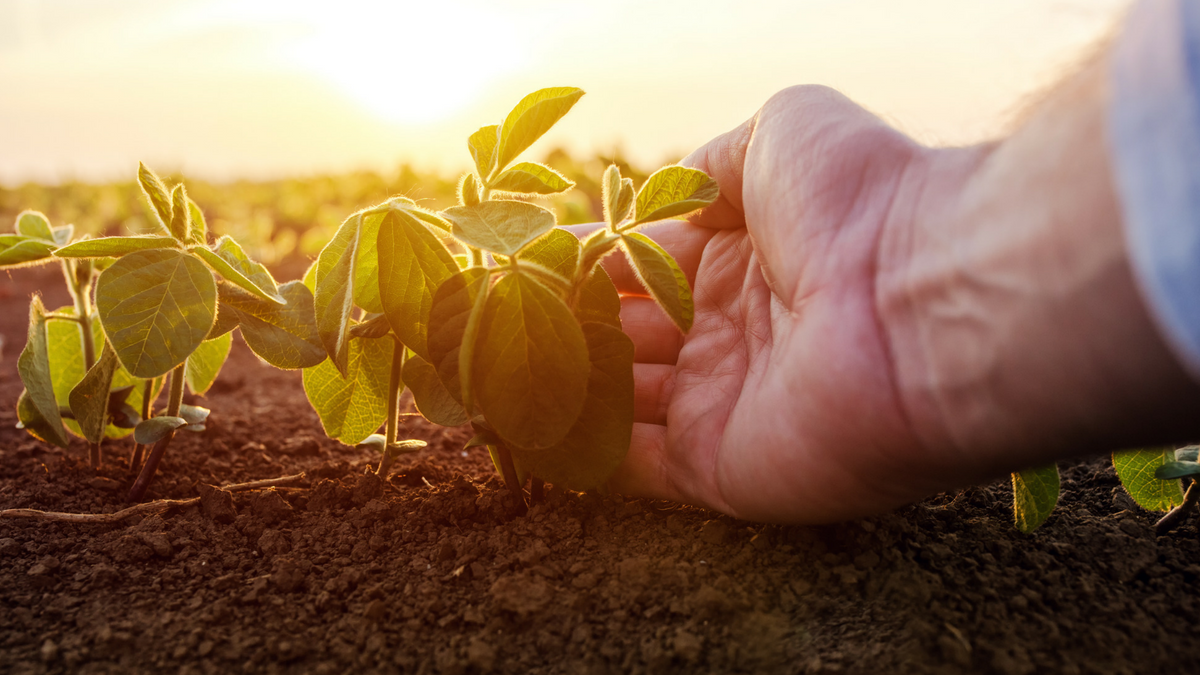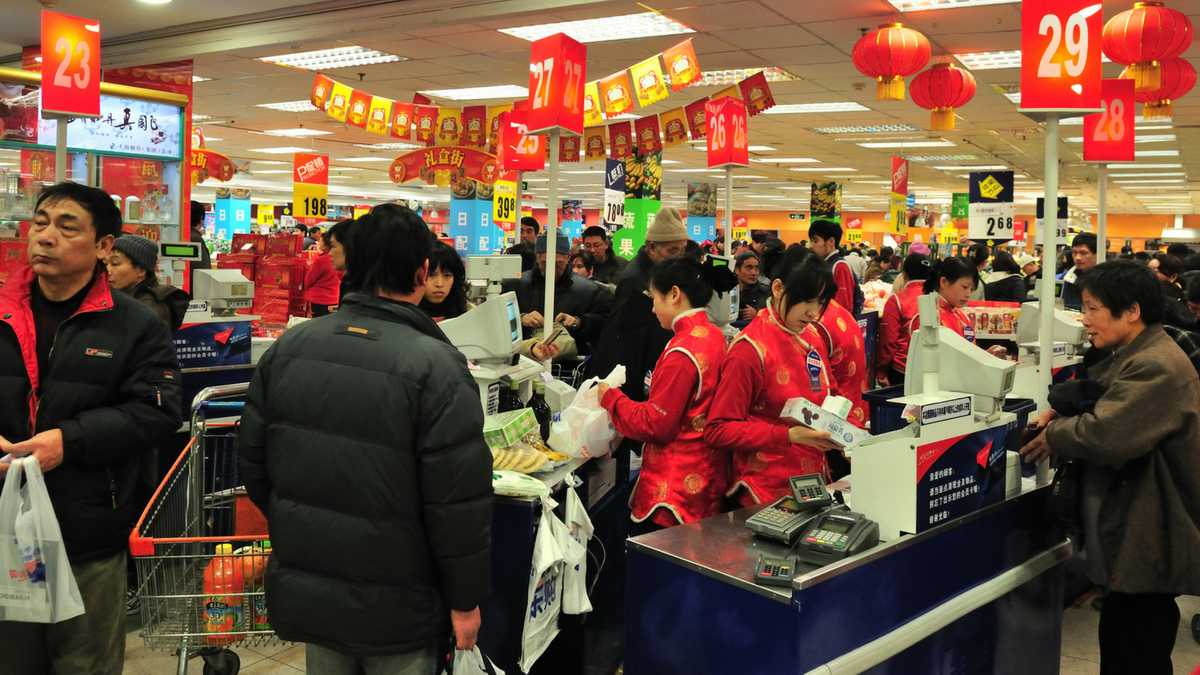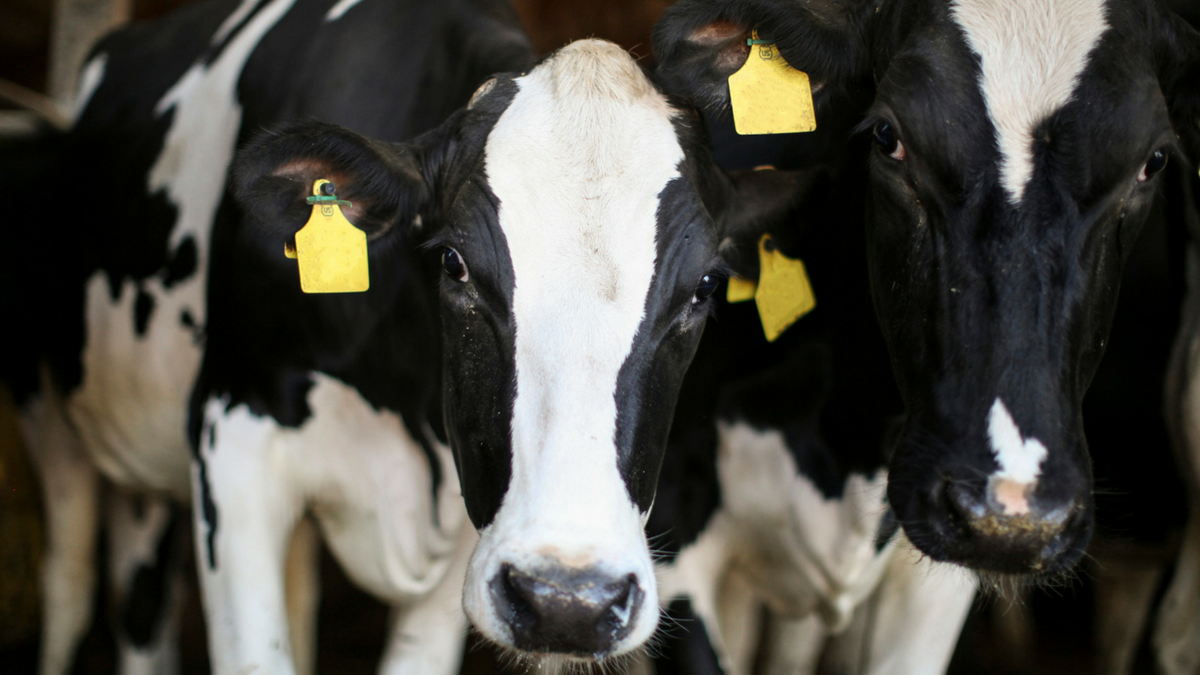The following is an edited transcript of Nicole Erwin's interview with Bill Northey, the USDA under secretary of agriculture. Click below to hear the full interview:
Nicole: I'm speaking with Bill Northey, under secretary of agriculture for the Farm Production and Conservation mission area. Bill, thank you so much for joining us.
Bill: Great to be with you.
Nicole: Your role at the United States Department of Agriculture (USDA) is still fairly new, but your history with agriculture is quite extensive. Can you talk a little bit about the role the USDA played as a partner for you over the years — as a farmer, and as Iowa Secretary of Agriculture?
Bill: Sure. I farm up in Northwest Iowa and have always participated in the farm programs. Farmers in the audience will know Agriculture Risk Coverage (ARC) and Price Loss Coverage (PLC) — lots of acronyms in government agencies — but these are programs that help support farmers when prices break significantly lower.
I've been a participant in the crop insurance program, which is a program that is offered by the USDA through private insurers. I have always had crop insurance on our farm. Most events don’t trigger a loss, but when we do have one — and we've had a couple disaster years — it was critically important to allow me to have enough resources to be able to farm again the next year.
The conservation side of the USDA has been important as well. We do some cost-share programs, whether it's incentives for cover crops or other kinds of programs. I had the 10-year Conservation Reserve Program (CRP) on a grass waterway that goes through one of our fields.
So, there are several different pieces that I've been able to use. The last 11 years that I was secretary of agriculture in Iowa, we partnered extensively with the USDA. Half of the Department of Agriculture in Iowa is focused on conservation programs — soil conservation and water quality programs. We have 99 counties in Iowa, and we have offices in each county. Those county offices were shared with Natural Resources Conservation Service (NRCS), with our state conservation folks and with local conservation folks.
We partnered well, and as technology changes, we talk about the kinds of things that will work on the new water quality programs. In fact, we changed the title of our Division of Soil Conservation to the Division of Soil Conservation and Water Quality as we increased efforts to look at reducing nitrate and phosphorous in our water, both in urban and rural areas. So, there are lots of opportunities to partner with USDA programs, and now we get the chance to look at some of those programs from the USDA point of view.
Nicole: Right. Where do you hope to take this new department as a future partner for farmers in the ag industry?
Bill: Well, certainly our charge from the secretary is a very customer-oriented USDA. My piece is the (USDA) Farm Service Agency, Natural Resources Conservation Service and Risk Management Agency. Those are the most customer-facing parts of the USDA. So, that's where farm programs, conservation programs and crop insurance are.
The secretary charged us with finding out what is working for producers out there or what needs to change. How do we be efficient, effective and customer-focused in what we're doing? We're going to be measuring customers’ attitudes toward the things that are happening at the office. We are already measuring workload analysis as we look to place people around the country in the 4,500 offices so that we understand the right places to put people.
We're looking at technology. We have a website called farmers.gov where we offer information. As time goes on, that will become a portal where users will be able to apply for or check up on programs as well. There are opportunities for folks to use our county office, but if they're sitting in a tractor waiting for a truck to come and pick up a load, they can also possibly report on the program activities or check out activities with USDA programs.
There are lots of opportunities to be more customer-focused — to be more customer-oriented. We've got to discover what that means, and that's going to be different between Maine and New Mexico, between Mississippi and Montana. We have to understand the most needed services and how we're doing.
Nicole: The customer experience feels like a new concept with the ag department. Did you ever feel, as a farmer, like a customer? How do you tie those two together?
Bill: You always do, somewhat. I think the engagement, to the degree that there is now, is certainly a step up. I'd argue, as you look at our county offices, those are the folks that people think of when they think of the USDA. They don't think of some under secretary who’s a thousand miles away.
They think of the folks in their county office. They know the operation. They know which programs work for them. Maybe we didn't define or measure customer service at that time, but everybody knew that you could depend on your staff there in those county offices.
As time has gone on, we burdened them with a lot of paperwork as we “dumped” new programs on them and have given them lots of opportunities to find other programs that will help people. It creates a complexity that takes them away from some of that customer service.
We're trying to understand the approach that business has taken toward customer service. A lot of folks say that banks, a long time ago, understood that there was a customer service aspect, and then some lost that. Now they're refocusing. Government hasn't always focused on it, either. Certainly, that's a desire of United States Secretary of Agriculture Sonny Perdue and especially for the mission area that I have responsibilities for.
Nicole: Innovation and being wirelessly connected is also critical to this industry. How do rural farmers fare with staying connected, and what are some of their barriers? Any idea how the U.S. compares to other countries in this arena?
Bill: Certainly, we have some areas with a lot of connectivity, and folks are able to use their GPS on their tractors and have high-speed internet at their farms. We have a lot of areas that don't. Others have better numbers of exactly how we sort out what those speeds are and how we compare to some other places, but we can drive across this country and you can be in a fairly populated area where your cell phone coverage drops off — where there isn’t good high-speed internet.
That is, as you say, increasingly important because so much of the technology we use now needs to be able to connect. We have livestock buildings that constantly report to farmers via their phones what the temperature is, whether the feeders are full, whether the water is working or the fans are working.
I just had somebody send me a Snapchat last night of him on his planter. Seven monitors in that planter cab are all doing different things. Of course, his feet were up because the tractor was driving itself across the field. He was able to Snapchat me in his field, planting soybeans — he has to have a signal to do that, and that information is likely being constantly uploaded to a computer back home, or maybe even to a report showing his planting progress to his crop insurance agent or, eventually, to his Farm Service Agency (FSA) office as well.
We have some real needs in broadband. That's a focus of some parts of the USDA. The secretary has been very engaged in that. Rural development is the arm of the USDA that probably focuses the most on that, but it's going to be increasingly important, and we have a long way to go to catch up to where we need to be.
Nicole: Crop insurance is also a vital safety net. You mentioned that, using it as a farmer yourself and operating in an increasingly unpredictable environment. From what I hear during my interviews with farmers, current payouts don't account for conservation practices and risk management. How does the lack of data and ability to connect with Wi-Fi and be wirelessly connected affect the ability for insurance to account for the effectiveness of risk reduction?
Bill: It's a challenge to rate risks appropriately. If you have a large amount of crops and they're all treated the same way, it's pretty easy to do it. For the most part, we're able to do that with our larger crops very easily. When you have smaller acreages, when you have a lot of variability in value, particularly with specialty crops — you look at an apple crop, and some of it goes to a fresh market and some of it goes to a processed market, and the production techniques vary — to make sure folks are doing things that raise a crop appropriately and not trying to abuse the crop insurance program, you've got to be able to have some oversight in what's going on. You've got to be able to rate it all properly.
With the technology changes in conservation right now — cover crops or other kinds of good conservation practices — if not done right, can actually put the crop production at risk. For example, can cover crops increase yields? I believe they can. I use cover crops on my farm, and I know a lot of folks that do. It can also add risk if you use cover crops in a dry production area and you don't get them terminated in time before that next crop; you take moisture away. How crop insurance is able to get the information that best represents what's happening and can show that good practices were used — to say, “Yes, there was a loss, but good practices were used” — and able to test all those practices over time is a challenge.
I believe technology is going to help us as we report more of those practices and we're able to rate those to a greater degree and compare those with yields as well. It's a challenging time, but we have more and more tools to address those challenges as well.
Nicole: Do you feel like cover crops became less of a conventional method in agriculture, and is that kind of coming back now?
Bill: There probably was a time, certainly before we had some of the tools we have today, that cover crops were generally used. We went away from that, and we do see it coming back. In Iowa, we encourage cover crops to a large degree because of water quality, and there's a significant improvement to water quality. You don't lose as much soil to erosion — phosphorous issues.
Also, nitrate is held in the soil longer during that time when the crop is not growing in the spring. Farmers are really adapting them because of control in erosion — being able to build soil health, feel of tilth, and being able to build organic matter as well. In Iowa, we have grown in the last six or seven years from about 50,000 acres of cover crops to over 600,000 acres of cover crops. We do see some real advancement of cover crops in some areas, certainly in the Midwest and in places that were previously low on cover crops.
We see it in lots of other areas as well. People are innovative. We're getting some new genetics in some of those cover crops — letting them grow a little bit better in cold weather, which allows them to not be so competitive against the crop but very competitive against the weeds. There are a lot of opportunities to increase the amount of cover crops with all the benefits that creates, not only for production, but the off-site benefits as well.
Nicole: Where do you see public-private partnerships playing a role in programs like the Regional Conservation Partnership Program (RCPP)?
Bill: It's a great program. Not only as the (former) Iowa secretary of ag, but also within USDA as well, we look at it as the only way we're really going to scale up the amount of conservation that is needed is not with a larger amount of new public dollars. It is by engaging folks the right way so that we can bring those private partners into the mix as well.
The Regional Conservation Partnership Program is a program that helps encourage partners to work with a program that generates federal dollars and brings partners to the programs. We have them all over the country. I visited several in other places besides the ones that I'm very familiar with in Iowa. It has brought thousands of partners across the country together. It has brought tens, maybe even hundreds, of millions of non-federal government dollars into those partnerships — private dollars. Organizations — farm organizations, non-farm organizations — have been a part of it. Certainly, state governments and local water conservation and water quality agencies have been a part of it. It is a great program.
There are some things that Congress is looking to adjust. RCPP came out of a program called the Environmental Quality Incentives Program (EQIP). Because it came out of EQIP, RCPP requires a certain amount of paperwork to make sure that you prove folks are spending the money the right way.
We can have more flexibility if it's funded on its own. It will still be oriented toward the right kinds of projects. It will still bring partners, but it will actually allow for more efficient management of those dollars, as the reporting requirement can be better. Congress is trying to address that, and I think that will be very helpful. I think that program will absolutely grow in the future.
Nicole: There are a lot of people watching the EQIP program.
Bill: There are, absolutely. It's a great program — our most popular program. RCPP, as a spinoff from that, is probably one of the other most popular programs.
Nicole: Big data in farming is also growing. I dare say that there isn't a John Deere tractor or any other major distributor with a machine coming off a line that isn't readily connected to the cloud. While the information that can be shared offers greater weather predictability, precision and pesticide and fertilizer application, it also tracks productivity.
There have been reports that farmable land is getting sold off in lieu of sprawl. How does value-added information help farmers argue that land is more valuable in production than out, and what scenarios could you see where this might play out in the future?
Bill: I think we are able to capture some of that transition. We're not always able to capture it, but we can capture it in several different ways. One way is through the technology in tractors. The other way is measuring program sign-up and whether people have crop insurance. Once you convert land to housing, you don't have crop insurance anymore. We're able to look at some of that participation rate in some of these programs.
We do have to try to keep good land around our cities. In fact, many of our cities are built on the easiest land to build houses, which is often highly productive farmland. We need to protect that. We have programs at the USDA in which some of our states or private entities will partner. They have easements in which a farmer who is in the path of development will sell off development rights and continue to farm the land. The farmer is paid a portion of the difference between development rights and farming, and the property is guaranteed not to be developed. We keep those areas in open spaces — we keep that agricultural initiative going in that area, and most of the time, the folks that are in the development around that space really appreciate having it. It's important productivity-wise. It's important for the viewscape that folks have. It's important, in many cases, for water quality. Although we have challenges in our ag land, we have more challenges in our urban areas with water quality issues as well. So, the right mix is important to retain.
Nicole: For a farmer who might be up against something like development, what program would you advise them to look into?
Bill: The easiest place to start is with their county service center. There is a USDA Service Center in every county. The program is called the Agricultural Conservation Easement Program (ACEP). We offer it out of the USDA, and not every state participates, and every region has the local dollars that are required for matches, but the folks in your county service center would know.
There are probably some programs outside the USDA that allow folks to address that ability to keep land in agricultural production, even though they would like to get some of that extra value — sometimes it's because of farm heirs or sometimes it's the transition from one generation to another, or other reasons you need to generate some dollars — you just don't want to lose the fact that it's a farm.
Nicole: A farmer who has this technology compared to a farmer who doesn't has a significant upper hand when it comes to negotiating sharecropping or renting land. For instance, the farmer who has the tech can go to the landowner and say, "I can produce X amount on this land and for this profit," whereas the farmer who hasn't tapped into the cloud might not be able to argue production rates as well. How do you balance some of these larger farmers who can afford the tech with the owners who aren't tapped into cloud technology?
Bill: Technology comes at us lots of different ways. Some of it is very size-oriented, so it's much easier to afford on a planter tractor covering 4,000 acres than one covering 400 acres because the cost is nearly the same to put the technology on a tractor. There are some non-size neutral impacts. Now, buying seed that has some technology on it is often just as easy for a smaller producer as it is for a larger producer. Some of our technologies are not as size-sensitive.
There are lots of reasons folks decide to rent to different farmers. We have some farmers who are smaller producers. They will talk about their ability to respond much more specifically to the land, to increase organic matter and maybe longer rotations. There are landlords who will say, "I'll take that even over a higher annual return from somebody else because I believe you're going to protect the land and you're going to do some positive things that are not only good for our neighbors that I can be really proud of, but also build the value of the land."
There are lots of decisions that go into deciding who you're going to rent to and who you're going to rent from. Technology plays into it. Not all technology is going to make a producer money. There's a lot of whiz-bang kind of technology that’s interesting to see, but does it create value? Boy, a lot of folks have figured out how to create value out of some of that technology.
We’re seeing it on smaller and smaller farms now as well — the ability to turn a planter on and off as it goes across point rows and angled fields. That is showing up on farms of 500 or 600 acres instead of just farms of 5,000 or 6,000 acres.
Nicole: As these farmers are putting this information in the cloud, there's debate on who has access to that and who doesn't, and being able to protect that. But who's to say that ag companies using a compilation of this data won't one day decide to farm themselves?
Bill: That could happen. There's a lot of tension out there over how much information is accessible. Most farmers are going to say they know some things that are not in that data, which will still limit the ability of somebody else to farm it. When it comes to caring for a farm with livestock or crop operations, there is nothing like the person living on the farm — the person who knows it.
They can wake up in the middle of the night and decide, "We're going to get some planting done tomorrow." Some of these farms don't operate really efficiently in a corporate structure where somebody is external or doesn't have the love of that land and grandpa's advice in the back of their head as they care for that land. I'm not sure how that's all going to play out.
We see some parts of agriculture that have really gravitated toward larger operations. The bulk of the operations across the country are still family-owned. Some of them are corporations. They'd look to transfer farming operations between generations, but for the families who are operating these farms, the decisions are made around kitchen tables. These are folks who feel that weight of earlier generations — that hope of younger generations and walking with them across that farm.
I tell you, they're going to be pretty competitive against any company out there that thinks there's a push-button that can operate from a thousand miles away and farm.
Nicole: Just to switch gears a little bit here, China has reopened its market to U.S. beef. What direction is the USDA taking toward helping farmers implement traceability and systems that support hormone-free production, which is a requirement for U.S. export beef to China?
Bill: We see some different criteria. For example, there have been changes in the soybean criteria — the amount of damaged crops that can go along with the soybean seed, or non-crop that can go along with the soybeans that we export. There's a constant effort that really happens in a different part of the USDA — and I'm not up to speed on all the other pieces — but there are constant efforts to come up with ways that help us increase exports. In some cases, there are extra requirements to do that.
Now, we also have a piece of the USDA saying the places where those requirements are not necessary will challenge those trade rules as well. We’ve certainly seen some of those from China from time to time or other places. We'll get into our discussions about whether those are fair trade rules or unfair trade rules, and we'll push back on those unfair trade rules.
In the meantime, you operate with the rules that you have for us to get more exports into China. There probably needs to be some traceability; certainly, we're seeing some of that finally grow again after not having access into China for way too long.
We had a few cases of bovine spongiform encephalopathy (BSE) over 15 years ago, and that kept beef out of the Chinese market for 15 years when everybody else had come back. It took way too long. We need open markets to be able to do it. They’re going to love the beef the U.S. producers produce if they get a taste of it. I think, in the long run, it will play out and we'll have our increases that we should have.
Nicole: We have just a little bit more time, so I'm going to touch on a couple more things. Let's talk about the dairy crisis, which groups like Farm Aid are saying is a reminder of what happened during the 1980 farm crisis when as many as 2,100 farms closed a week. In Wisconsin, they're saying a farm closes every day and a half because of oversupply and low milk prices.
On the flipside, some economists would say that the U.S. open market system has allowed more efficient farms to succeed — those that have grown in size and adopted a more technical approach to the operation. Is that the future? Bigger, better and those that are more innovative will succeed, or can systems like Canada’s supply management offer a market alternative?
Bill: It's a really challenging time right now in the dairy market. One of the challenges with milk is that you have to move it — cows produce milk two or three times a day and it needs to get on the road to a processing plant, either for milk, cheese, yogurts or other kinds of things. We're seeing some increase in exports, which helps take a little bit of that supply. We have some places where we do not have enough processing capacity right now, and we see some dumping of milk going on. Part of it is our producers of all sizes have gotten more efficient. Our smaller producers are producing more than they used to, and, certainly, our larger ones are as well.
It's a real challenge trying to get that right. For folks to quit that business, it has to be very unprofitable. They work so hard — you think it'd be a lot easier to drive them out of business — but these are folks who plan to be in this business, have the commitment to it, and take some real losses before they'll get out. It's a real challenge to not have so much pain for everybody out here.
I do believe they will continue to get more efficient at all sizes. We see technology helping some of our smaller producers where they're using robotic milkers and other kinds of things that allow them to be competitive against the labor cost of larger producers.
We have a margin protection program that was used a little bit by producers previously that just wasn't working, and Congress changed it. We're in the process of sign-up right now for those producers of a newer, improved margin protection program. Is that going to be the answer to all the problems? It is not. It's going to take a little bit of the edge off, but we do have to look at rebalancing the production and the demand.
It’s really up to Congress and others, but I doubt that we'll see a supply management program like Canada’s — although their producers might feel very good about it right now — they're abusing that program and dumping milk into markets that we used to have and that we would be competitive in if they weren't subsidizing that by charging their consumers a higher rate.
That's one of the issues out there in the trade discussions between the U.S. and Canada. Certainly, that has created some problems. If you're going to expand in Canada, you've got to buy quota. That means it's going to cost you more to buy quota than it will to buy the cows and build the barn. That's not a painless system, especially as young people try to get involved in the business.
There hasn’t been a magic solution. It's hard. Hopefully, more demand will be a part of that solution and then we won't have to lose many more producers, but some producers are at the place where it's just been too much too long. They don't have another generation coming in, and it's really hard to see. In some cases, some of those cows are going down the road and not going to another dairy.
Nicole: You're talking about technology helping with some of these things, and gene editing — we’re hearing so much about that and the future of CRISPR technology in ag, from the Arctic apple to gene editing pigs for disease resistance. Did you ever imagine as a young boy on the farm that this would be the future of agriculture? Does this kind of science excite you or remind you of the precautionary principle?
Bill: It excites me. I did not imagine it, not at all. When you look at some of the conversation around CRISPR — and I'm sure most of the listeners understand we’re talking about biotechnology. Being transgenic — actually taking a gene from another species and putting it into this species — is a different kind of technology than CRISPR, which is actually editing genes that are already there so that you can prevent an apple from browning, or allow an animal to be healthier, to avoid a disease or food safety issues.
It's almost mind-blowing to think of all the possibilities here, but an awful lot of those possibilities are ways that will make food safer, ways that we can care for our animals, our land and our plants to a better degree. We will be more productive with all the challenges that that brings as we talk about productivity. In a world that's growing and a world that expects us to care for our land and our animals in a better way, this technology is going to be very important to address some of those concerns.
It's also very democratic. It doesn't take a billion-dollar or million-dollar operation to make changes that will create improvements. So, rather than just being for our big crops, it will be available for smaller crops. It's kind of mind-blowing, again, to think about how it can all be used, but it certainly is a technology that we want to figure out how to use appropriately because it's going to be an important part of our future.
Nicole: We've covered a lot, but nowhere near all the areas that ag touches. To wrap things up, what would you say you're most interested in seeing develop with the future of ag, from biofuels to biostimulant technology? What is the priority for you in your new role?
Bill: The priority in my role is the customer orientation that we need to take the USDA in my farm production and conservation area — the ability to respond in a way that works for each producer no matter what their crop or livestock is; we need to be relevant. We need to be able to be responsive, but we also need to be efficient with taxpayer dollars when we do that.
I'm excited about the time that we're in, the opportunity for innovation, the entrepreneurship that there is in agriculture. Yes, we see growth in some of our larger farms, but we see brand new operations that are smaller: vegetable, specialty cheese operations, mushroom operations — there are just so many creative activities out there. They have always had challenges, and still do, but there are opportunities because we're able to market those products across a wider area – to produce those in a way that adds technology and uniqueness.
So, the specialty side of agriculture continues to grow with lots of opportunities for farms of all different sizes, different places, different families and different jobs, and whether they're part-time or full-time farming to find their place in agriculture. That also, hopefully, allows us to tell that story of how food gets to the plate and have folks appreciate agriculture and all the folks who help make it happen to be able to feed everybody every day.
Nicole: Bill Northey is the under secretary of agriculture for the Farm Production and Conservation mission area. Thank you so much.
Bill: Thank you. I appreciate it.
Bill Northey spoke at ONE: The Alltech Ideas Conference(ONE18). All presentations from ONE18 are now LIVE on the Alltech Idea Lab! Click the button below to view presentations for FREE after sign-up.

